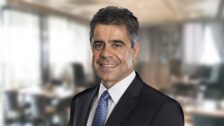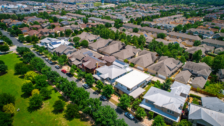SMSFs back in vogue as investors seek control
This week saw the release of the Australian Taxation Office’s (ATO’s) latest quarterly data on the self-managed super fund (SMSF) sector. The information provides a unique insight into what has been a sector under pressure for many years now, as both regulators and industry fund alternatives fine-tuned their focus.
The takeaway from the latest publicly available data is that SMSFs are back in town. The last few years had seen a surge in SMSFs being closed down, with members cashing-out or rolling-into the strongly performing ‘low-cost’ alternatives.
Yet in March, and throughout 2020 for that matter, SMSFs have come back into vogue option, showing a massive spike in new investors. The sector hit $754 billion as of the end of March 2021, with 6,147 new funds established in the quarter alone. In previous reports, such strong growth in fund establishments was offset by similar levels of closures, which wasn’t the case in this instance.
For the March quarter there were only 240 SMSFs wound-up, meaning the sector gained a net 5,907 new funds. That represents the largest net increase since September 2016, a stunning result. Following the result, SMSFs now represent 1.12 million members across 597,000 SMSFs, yet by far the most interesting insight is from where these members are coming.
Increasingly, new SMSF members are coming from the younger cohort. During the quarter, 34 per cent of new members were between 35 and 44 years of age, and over half were aged between 35 to 40. This suggests the days of cashing-in your corporate or industry fund super at retirement and “taking control” of one’s capital may well be moving on.
The last 12 months has seen a huge generational boom in new so-called ‘retail’ investors around the world; this group has been reported widely as taking stock tips from Facebook groups and using their stimulus cheques to speculate on the market. These statistics suggest the trend is moving to Australia, albeit not necessarily at the same speculative level.
While the asset allocation data provided by the ATO offer limited granularity, an interesting takeaway was a fall in the allocation to crypto-currencies within SMSFs. In March 2021 digital assets reached $174 million, down from $185 million in June 2019 when it was first introduced.
So, what is driving allocations and what should we be looking out for?
In the first case, it seems a continuation in the trend of retail investors taking control of their capital, but in a manner that has less impact on their lifestyle today. Transparency into the underlying investments held by My Super products has been a key plank of the impending Your Future Your Super reforms, which may be difficult to deliver, but is a key reason why many consider SMSFs.
They may also be heeding comments made by Rice Warner and the SMSF Association last year, where they highlighted that SMSFs are cost-competitive at balances as low as $200,000, and generally the cheapest option at $500,000 and above.
In any case, increasing interest in investing and demand for greater transparency must be seen as a positive at a time when financial literacy remains quite low.











